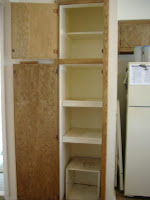In the reports I write for
ConsumerSearch, we usually identify both a "best" product and a "budget" choice. The best product, as a rule, is the one that does the best in professional tests and gets the most positive reviews from users—in short, the best one money can buy. The budget model, typically, is one that doesn't perform as well as the top-rated model, but still does a respectable job for a significantly lower price.
As a consumer, I'm generally more likely to go with the budget model than the best one. One of the usual principles of my ecofrugal lifestyle is never to pay more for anything than I really need to, and so I'll choose the best-priced product that meets my minimum standards of quality. However, in the past week I've realized that there's an exception to this rule. When it comes to goods, I'm inclined to compromise on quality to get the best price—but with services, it's the other way around.
This came home to me last week when I went to my dentist for a filling. Once the Novocaine wore off, I found it hurt to bite down on that tooth (which was particularly annoying, because it was a tooth that hadn't hurt at all before the filling was done). I went back to the dentist and he adjusted the height of the filling—which hurt like blazes, though he didn't seem to notice when I yelped—and said that if that didn't fix the problem, it meant that I "couldn't tolerate" composite fillings and would need to have it replaced with an amalgam filling. That sounded pretty strange to me, since I'd had composite fillings done before with no problems, so I decided to go to my old dentist, Dr. Brown, for a second opinion.
From the minute I sat in the chair, the difference between him and my new dentist was like night and day. He examined the tooth (something the other dentist hadn't actually bothered to do) and told me that part of the tooth that was causing me pain wasn't the filling; it was the exposed dentin around it. This could have been sealed over at the time the filling was done, but to do it now would mean redoing the filling. So he put on a fluoride treatment to speed up healing and advised me to give it a couple of weeks to recover—and he didn't even charge me for the consultation. Based on this experience, I decided on the spot that not only would I go back to Dr. Brown if I needed the filling redone—even if it meant paying out of pocket—but that I would also switch dental plans next year, so that I could start going to him on a regular basis. The traditional dental plan, which lets you choose any dentist, costs more than the DMO we're on now—but if the extra money can save me another experience like the one I'm having with this filling, it will be well worth it.
When I told my dad about this experience, he applauded my decision. He said that although he and Mom are a bit tight-fisted themselves (I come by it honestly), they "would never cheap out on health care." I thought this over, and I came to the conclusion that this rule holds true for other services as well. It's worth paying more to get work you can count on, not just from your doctor or your dentist, but also from your auto mechanic, your hairstylist, the contractors who work on your house—basically, from anyone who's doing a job that it's important to you to have done right. And since another principle of my ecofrugal lifestyle is "Don't pay someone else to do a job you can handle yourself," that description applies to pretty much every service professional I hire.
So I no longer feel guilty—even a little bit—that when we needed our side stoop repaired this spring, I hired the contractor with the highest bid (but the most competent assessment of the problem), rather than the one with the lowest bid (who kept changing his mind about what needed to be done, and his quoted price along with it). At the time, I thought maybe I was going against my ecofrugal principles by paying more than I needed to. But I just hadn't come up yet with the corollary to that rule: "If you
do need to pay more to get what you really need, then don't hesitate to do it." It's money well spent if it saves you from major headaches down the road.






